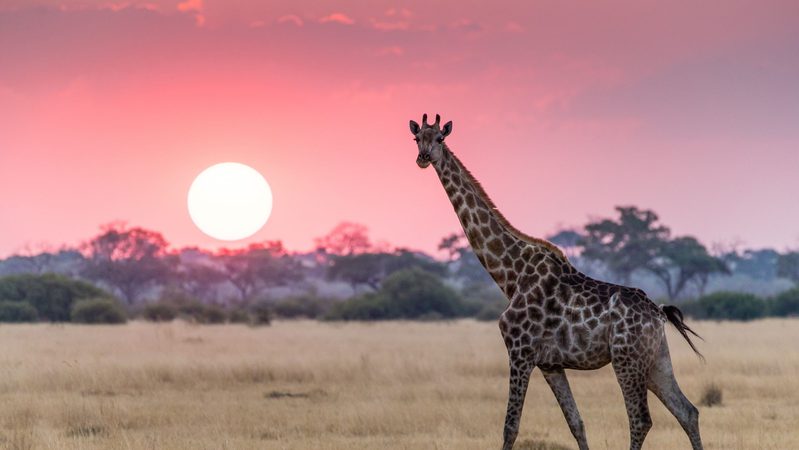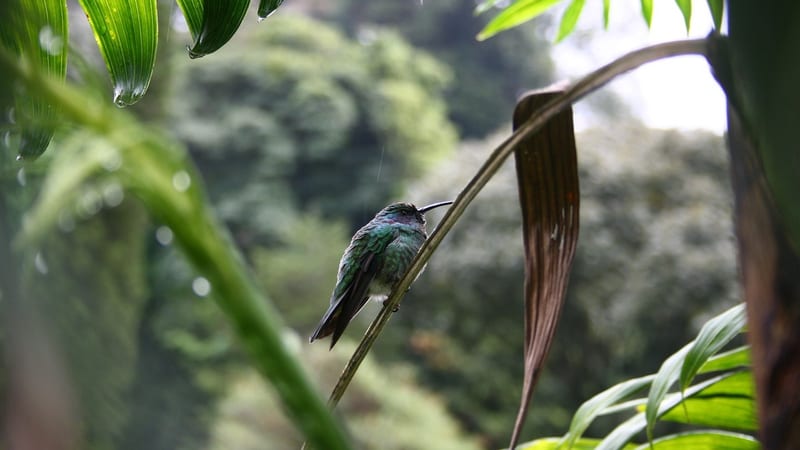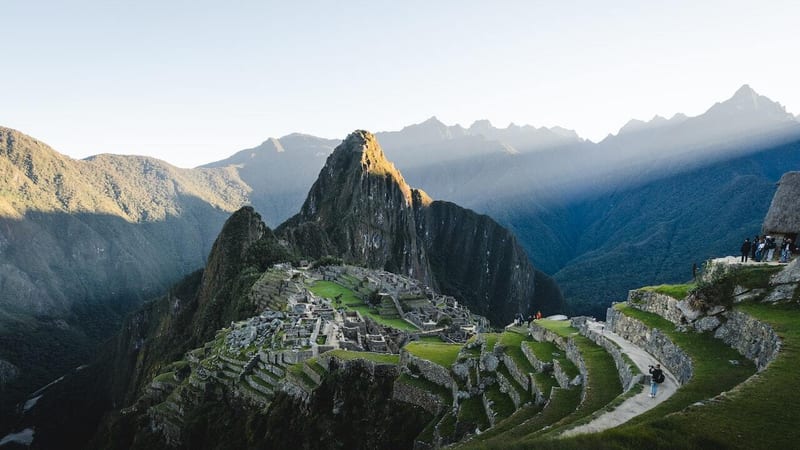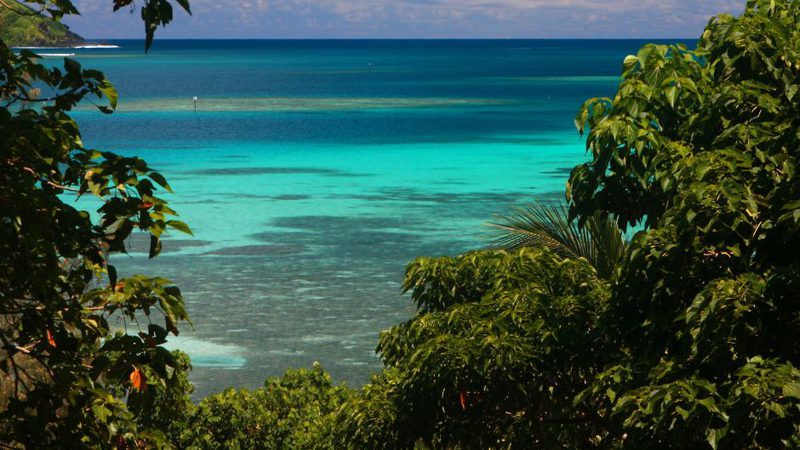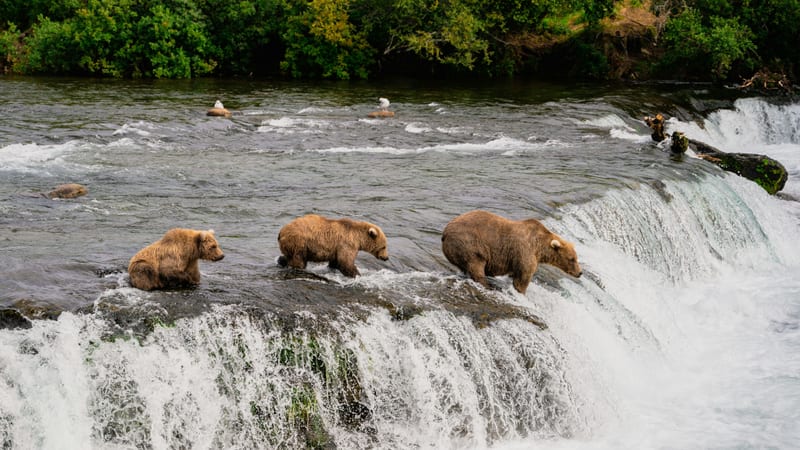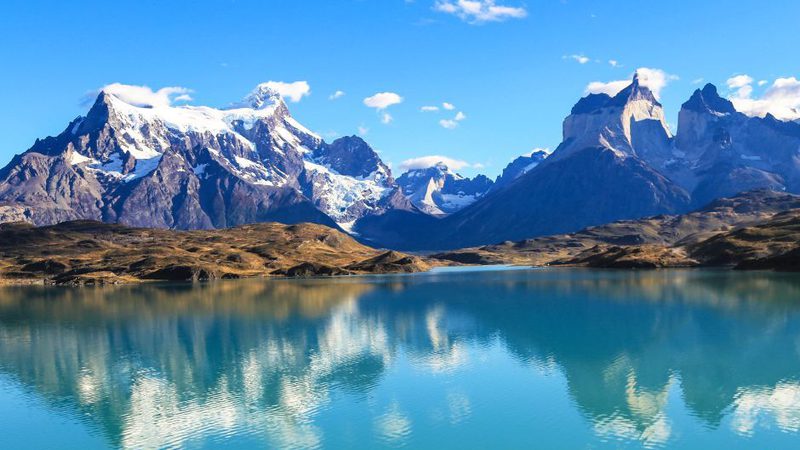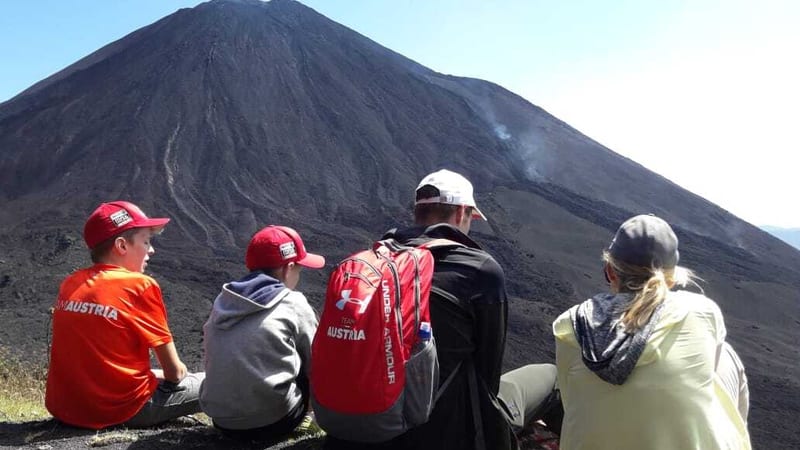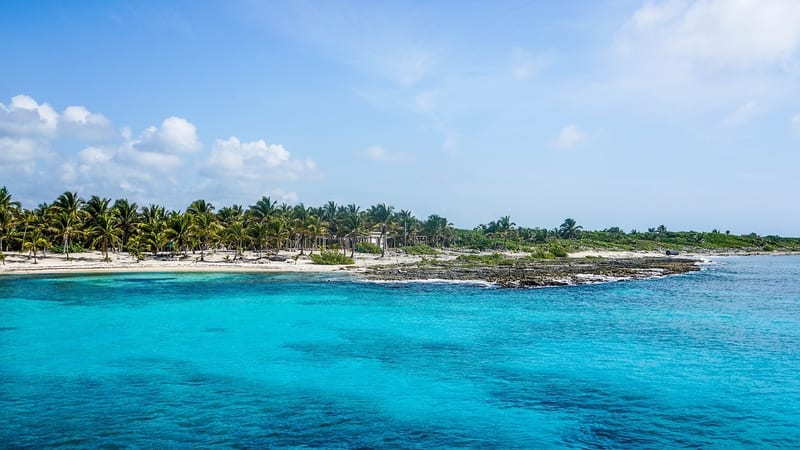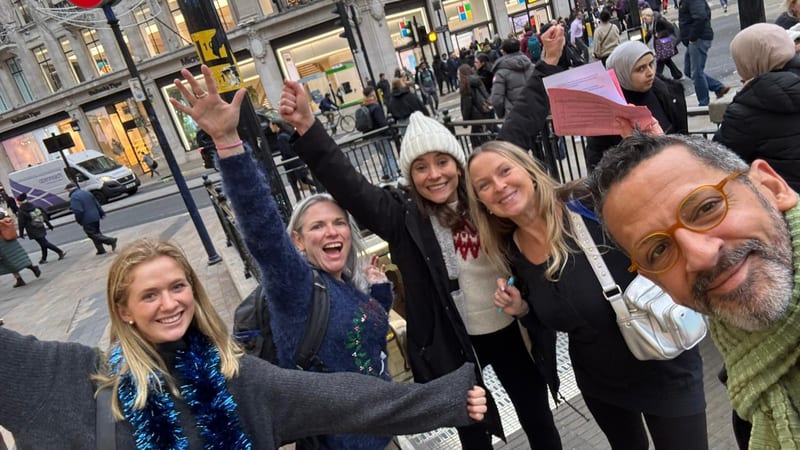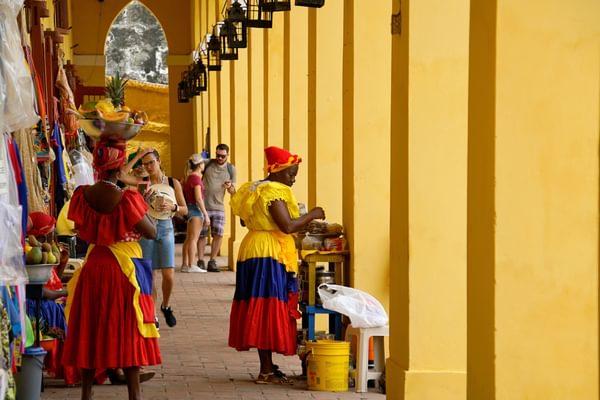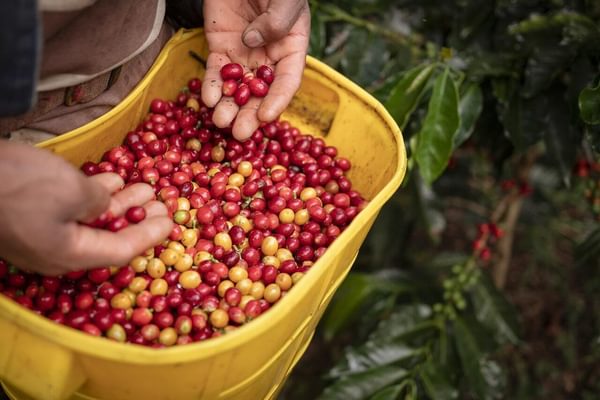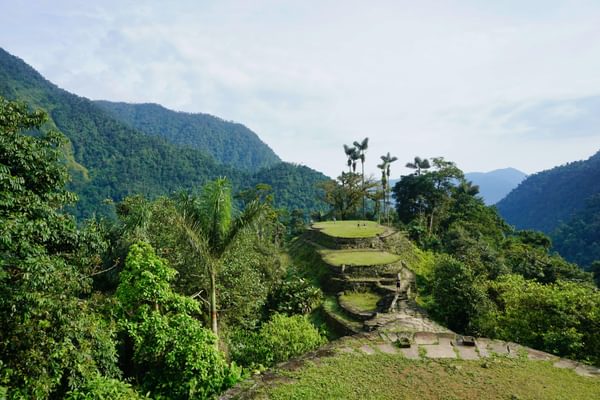Festivals, beaches, coffee plantations, and extreme biodiversity
Colombia is home to some of the warmest and most welcoming people. It is packed with museums, monuments, and heritage sites, from the country's modern cities to its charming colonial towns.
Colombia is home to some of the most diverse animal life on the globe, with 1,700 known bird species, 450 mammal species, and over 500 reptile species. These include the Andean condor in the Coffee Triangle, the humpback whale in the Pacific Ocean, and the pink river dolphin in the Amazon. A journey to Colombia provides a plethora of wildlife chances in a beautifully preserved space.
Colombia is an adventure playground, with over 55 national parks to explore. Head to San Gil for its rafting, abseiling, and mountain biking to go for a multi-day hike over the Sierra de Nevada Mountains, that ends up at the archaeological site of the 'Lost City'. Colombia is rich in ancient culture, from the archaeological monuments of the Tayrona people to the megalithic statues in San Agustin, and the mysterious underground tombs in Tierradentro.
Bogotá, Colombia's capital city, is known for its historic downtown and the compelling Gold Museum, which displays Colombia's gilded past and has the world's greatest collection of pre-Hispanic gold. Medellín is known for its contemporary restaurants and arty shops, and Calí is the world's salsa capital, the best place to sway your hips and dance to the music that this city lives and breathes. Cartagena is Colombia's tourist hotspot, with cobblestone streets, exquisite churches, and dramatically eroding forts; it is Latin America's most attractive and fully preserved colonial city. The cobbled settlements of Popayan and Villa de Leyva are also well worth a visit, transporting you to the past and allowing you to escape the crowds thrumming around Cartagena.
Finally, Colombia is also home to over 300 beaches. These range from the wild, sugary-white beaches of Tayrona National Park to the diving mecca of San Andres and the laid-back Caribbean vibe of Providencia. Beach holidays in Colombia are as varied as you can get.
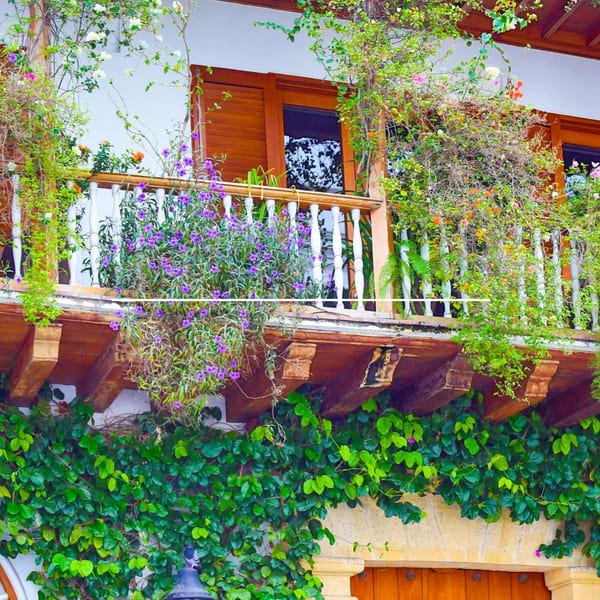
Garcia Marquez: One Hundred Years of Solitude Trip
- Bogota
- Valle de Cocora
- Santa Marta
- Aracataca
- Cartagena
Explore the magical places that inspired Gabriel Garcia Marquez to write One Hundred Years of Solitude
Colombia Trip Inspiration
When to go to Colombia
A month-by-month guide of when to visit Colombia
- Best
- Good
- Mixed
- Jan
- Feb
- Mar
- Apr
- May
- Jun
- Jul
- Aug
- Sep
- Oct
- Nov
- Dec
January
January is part of Colombia's dry season, offering pleasant temperatures and less rainfall. The country's diverse geography ensures a variety of climates.
Coastal regions, like Cartagena and Santa Marta, enjoy balmy temperatures around 30°C (86°F), perfect for sunbathing and exploring pristine beaches. Inland cities such as Bogotá and Medellín experience milder temperatures ranging from 10°C to 20°C (50°F to 68°F), ideal for city sightseeing and hiking in the surrounding mountains.
February
February continues to offer favourable weather conditions for exploring Colombia. The dry season persists, ensuring pleasant temperatures and minimal rainfall across the country.
Coastal areas like Cartagena and Santa Marta maintain their inviting climate, with temperatures hovering around 30°C (86°F), making it an excellent time for beach activities and water sports. Inland cities such as Bogotá and Medellín experience slightly warmer temperatures ranging from 15°C to 25°C (59°F to 77°F), allowing visitors to enjoy outdoor excursions comfortably.
March
March marks the transition from the dry season to the beginning of the rainy season in Colombia. While the weather remains generally pleasant, there may be occasional showers and increased humidity later in the month.
Coastal regions like Cartagena and Santa Marta experience temperatures around 30°C (86°F) but may also see some rainfall. Inland cities such as Bogotá and Medellín continue to enjoy mild temperatures ranging from 15°C to 25°C (59°F to 77°F) but may also encounter intermittent rain showers.
April
April is the beginning of the shoulder season in Colombia. During this time, the weather can be more unpredictable, with increased rainfall in various regions.
Coastal areas like Cartagena and Santa Marta may experience higher humidity and occasional showers, while inland cities such as Bogotá and Medellín can also see increased precipitation. It's advisable to pack rain gear and plan outdoor activities accordingly.
May
In May, Colombia experiences varied weather and climate conditions depending on the region.
Coastal areas like Cartagena and Santa Marta enjoy warm temperatures around 30°C (86°F) with occasional showers. Inland cities such as Bogotá and Medellín have milder temperatures ranging from 15°C to 23°C (59°F to 74°F).
June
June continues the rainy season and brings varied weather conditions across the country.
Coastal regions like Cartagena and Santa Marta experience warm temperatures around 30°C (86°F) with increased rainfall. Inland cities such as Bogotá and Medellín have milder temperatures ranging from 15°C to 25°C (59°F to 77°F) and can also see occasional rain showers.
July
In July, Colombia experiences diverse weather conditions depending on the region. Coastal areas like Cartagena and Santa Marta offer warm temperatures around 30°C (86°F) with occasional showers. Inland cities such as Bogotá and Medellín provide milder temperatures ranging from 15°C to 25°C (59°F to 77°F) and can also see rain showers.
July presents fantastic opportunities to explore Colombia's natural beauty. Discover the stunning landscapes of Tayrona National Park, hike through the Cocora Valley, or go whale watching along the Pacific Coast.
August
In August, Colombia experiences diverse weather conditions depending on the region. Coastal areas like Cartagena and Santa Marta offer warm temperatures around 30°C (86°F) with occasional showers. Inland cities such as Bogotá and Medellín provide milder temperatures ranging from 15°C to 25°C (59°F to 77°F) and can also experience rain showers.
September
In September, Colombia experiences varied weather conditions depending on the region. Coastal areas like Cartagena and Santa Marta offer warm temperatures around 30°C (86°F) with a chance of occasional showers. Inland cities such as Bogotá and Medellín provide milder temperatures ranging from 15°C to 25°C (59°F to 77°F) and can also see some rainfall.
October
October is the start of the rainy season or the Low season in Colombia.
Rainfall is heaviest inland in the cities like Bogota and Cali, however, it is perfectly navigable and manageable to visit these places despite heavy downpours. There are plenty of indoor activities like museums, restaurants, and art galleries.
November
The rainy season eases up slightly as it transitions to the dry season at the end of November.
Coastal areas such as Cartagena and Santa Marta continue to offer warm temperatures, ranging from 28°C to 32°C (82°F to 90°F), with lots of showers. Inland cities like Bogotá and Medellín start to cool down with temperatures ranging from 12°C to 20°C (54°F to 68°F). If you prefer warmer and drier weather, stick to the Caribbean side of Colombia. The coastal region, notably Cartagena, has a plethora of colourful attractions.
December
December is the beginning of the dry season, or High Season, and marks the start of the best conditions in which to visit Colombia.
Coastal areas such as Cartagena and Santa Marta offer warm temperatures ranging from 28°C to 32°C (82°F to 90°F). These regions tend to have a mix of sunny days and occasional showers. Inland cities like Bogotá and Medellín have milder temperatures ranging from 12°C to 20°C (54°F to 68°F).
Where to go in Colombia
Top places to visit in Colombia
Best places to stay in Colombia
FAQs About Your Colombia Holiday
Planning a holiday to Colombia? Our experts share advice on everything from what to pack, when to go, to tips for families, covering the questions we get asked the most.
When is the best time to visit Colombia?
Colombia is a year-round destination thanks to its varied climates. December to March and July to August are generally driest, making them popular for travel. The Caribbean coast is best from December to April, while the coffee region and Bogotá enjoy pleasant weather most of the year. Rainfall varies by region, so the best time depends on your route.
Is Colombia a good holiday destination?
Yes, Colombia is one of South America’s most rewarding destinations. It offers colonial cities, Caribbean beaches, coffee plantations, the Amazon rainforest, and vibrant culture. In recent years, it has transformed into a safe and welcoming country for visitors. Travellers can enjoy a mix of history, adventure, and natural beauty with fewer crowds than in neighbouring countries.
How long should I spend in Colombia?
We recommend 10–14 days for a first visit, covering Bogotá, Medellín or the coffee region, and Cartagena with time on the Caribbean coast. Two to three weeks allows for deeper exploration, adding the Amazon, Tayrona National Park, or colonial towns like Villa de Leyva. Colombia’s diversity means there’s always more to discover.
How much does a holiday to Colombia cost?
Tailor-made trips to Colombia start from around £2,800 per person for 10–12 days, excluding international flights. This typically includes accommodation, transport, and guiding. Costs rise for luxury hotels, private tours, and internal flights. Colombia offers excellent value compared with many destinations, with high quality at reasonable prices.
What are the must-see places in Colombia?
Highlights include Bogotá’s historic Candelaria district, Medellín’s innovative neighbourhoods, the coffee region, and Cartagena’s colonial streets. Natural wonders include Tayrona National Park, the Amazon, and Caño Cristales (the rainbow river). The Rosario Islands and Caribbean beaches add relaxation, while vibrant festivals showcase Colombia’s lively spirit.
How do I get to Colombia?
Direct flights from Europe and the US serve Bogotá, Medellín, and Cartagena. Once in-country, internal flights are efficient and often the best way to cover long distances. Road travel is improving but can be slow due to mountainous terrain. We’ll plan your journey to make travel smooth and comfortable.
Is Colombia safe to travel to?
Yes, Colombia is now safe to visit when travelling with care and good planning. The country has worked hard to improve security, especially in tourist regions. Cities are lively and welcoming, with friendly locals. Travellers should use standard precautions in urban areas, but overall Colombia is a safe and rewarding destination.
What vaccinations do I need for Colombia?
Recommended vaccinations include hepatitis A, typhoid, and diphtheria-tetanus-polio. Yellow fever is advised for the Amazon and some rural regions. Malaria prophylaxis may be recommended for rainforest areas. Always check the latest advice with your GP or a travel clinic before departure to tailor recommendations to your itinerary.
Speak to a Colombia expert today.
A tailor-made itinerary just for you.

Amanda
Travel Expert

